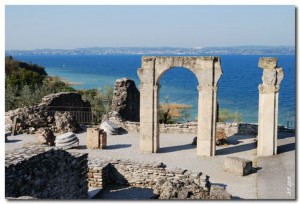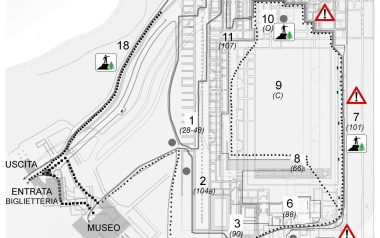Grottoes of Catullo
The Grottoes of Catullo remain right on the extreme point of the historical center of Sirmione occupying a vast part with its almost two hectares of extension and with an exceptional panorama.
The name Grottoes of Catullo is a term of the Renaissance, due to the fact that at that time the area appeared with large collapsed rooms covered with vegetation that gave the idea of caves and the fact that the poet Catullo, of Veronese origin and died in 54 BC, had a villa in the area; erroneously he was attributed the property of this too. It is actually the largest and most important Roman villa in northern Italy, built between the 1st century BC. and the first century AD, originally developed on three floors, but only the two underlying ones remained, unfortunately the noble floor was lost, also thanks to the custom of using parts of the ruins as building material for the houses of the premises.
The first excavations and scientific studies on the area date back to the nineteenth century, but the first on a large scale were started in the middle of the twentieth century; these highlighted that the villa was built between the end of I a.C. and the beginnings of the I d.C. while it was abandoned around the III century AD The southern part of the same is the oldest one because there are existing pre-existing foundations, in this position there was also the main entrance that gave access to the residential floor, equipped with spas and on the long sides there were open galleries and terraces; the central part was used as a garden with paths and flowerbeds. Ramps and ladders allowed access to service areas and the lake to the tip of the peninsula. The western part of the lower floor was used for hot or rainy days, allowing indoor walks in the large portico carved out of the rock.
With the abandonment of the villa during the III century AD some fortifications were built which, starting from it, covered a good part of the tip of Sirmione including the village up to the castle, the area was also used as a necropolis.
The property is owned by the Superintendency since 1948, which has been involved in restoration and conservation.


